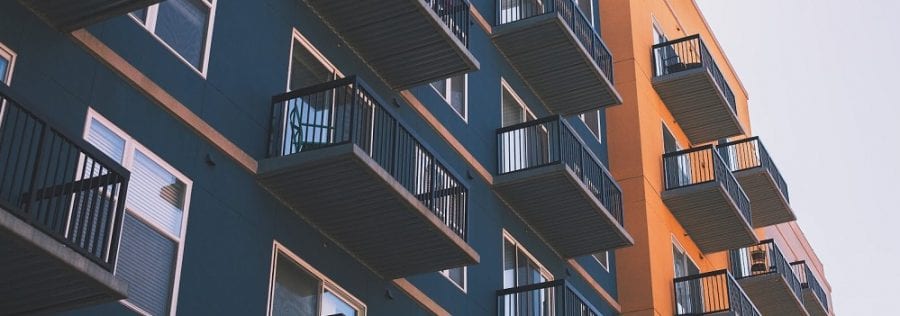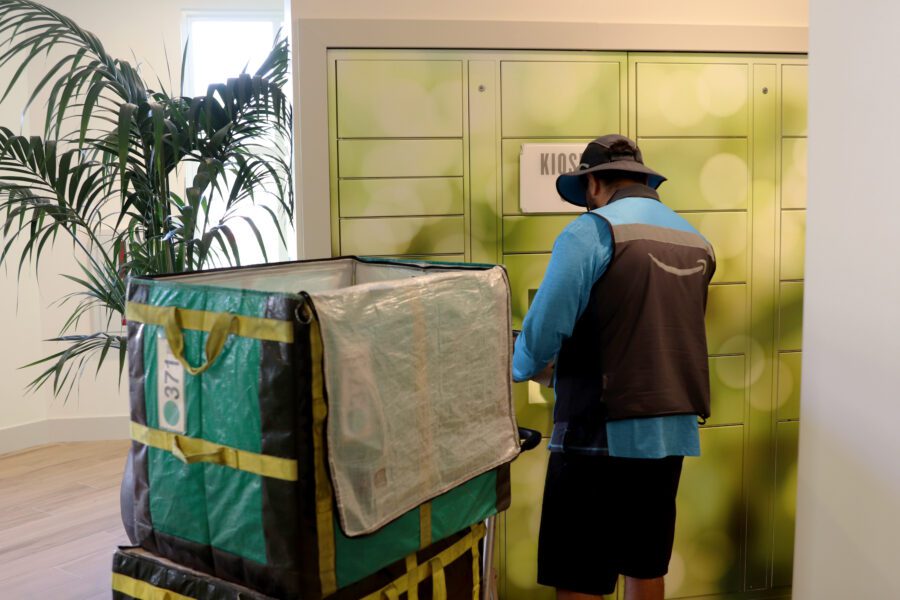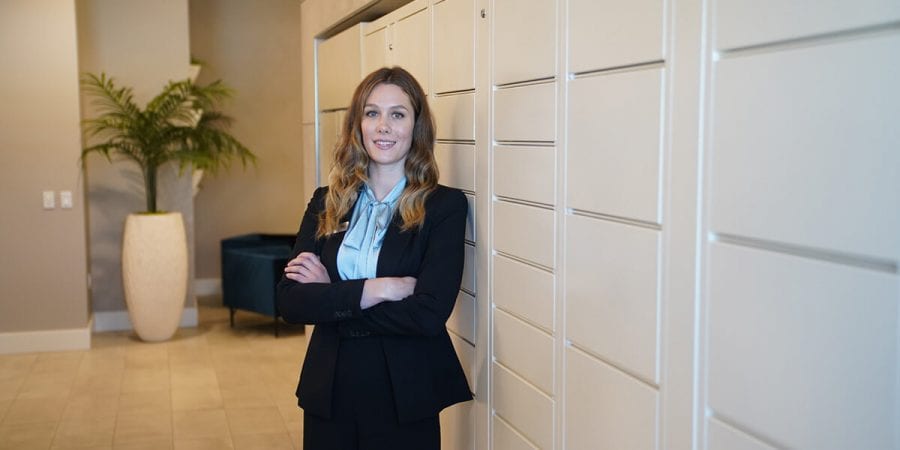
Multifamily
Multifamily Market Trends: Growth in 2020 and Beyond
Written by: Parcel Pending
5 Min Read
Published: April 14, 2020
Updated: March 29, 2023
The multifamily industry is constantly evolving and experts anticipate more changes in the next decade. Property owners and managers looking ahead in 2020 and beyond have questions such as: Will there be high levels of rate increases? How are 2020 vacancy rates tracking against the historical average? How do I need to respond to expected rental market changes?
Multifamily Housing Vacancy Rate
The vacancy rate at a multifamily property is almost always about supply and demand.
According to REIS Real Estate Solutions by Moody Analytics, vacancy rates across the nation have gone up slightly; however, rental growth has remained strong. Experts suggest that the reasoning behind this trend is that the pace of new housing units coming online is slowing.
REIS reports that areas with the highest vacancy rate increase include Fairfield County, Charlotte, Greensboro/Winston-Salem, New Haven, and Dallas. Meanwhile, those with the biggest decline in vacancy include Fort Lauderdale, Jacksonville, Washington (DC), Oakland, and San Bernardino/ Riverside.
Rent Growth
Freddie Mac reports that rent growth is expected to remain healthy in 2020, growing 3.6%, just above the historical average. Additionally, RealPage and Yardi project annual 2020 rent growth at 2.5%.
According to REIS, the national average asking and effective rent increased by 0.5% in Q4 2019. At $1,498 per unit (asking) and $1,426 per unit (effective), the average rents have increased 3.7% and 3.8%, respectively year over year (2018 vs. 2019). This marks the lowest annual growth rate in more than two years.
The areas that saw an increase in effective rent of 1.0% or more, according to REIS, include Charleston, Chattanooga, Tucson, Pittsburgh, and Phoenix. On the flip side, the areas that experienced a rent decline include Fairfield County, New Haven, Richmond, and Northern New Jersey.
Supply and Demand
Demand for multifamily housing is expected to remain robust, especially for apartment rentals.
Apartment supply growth is likely to peak in 2020 after slowing down slightly last year. This will keep rent growing at a similar pace; however, vacancy rates could rise.
Freddie Mac reports that supply is expected to moderately outpace absorptions throughout 2020, causing vacancy rates to increase from 50 bps up to 5.4%. Experts expect demand to cool slightly compared with the elevated levels seen over the past few quarters due to lower forecasted job growth. As a result, we could see vacancy rates move above the long-run average by 2020.
Vacancy Rate
Freddie Mac states that the increasing vacancy rate is projected to cause income growth to moderate as landlords and managers balance rent growth and occupancy. As a result, there is a forecast gross income growth of 3.2% in 2020, falling below the historical average.
Cap Rates
According to Freddie Mac Multifamily, cap rates remained relatively flat throughout 2019 and property prices continued to grow in response to solid multifamily fundamentals and strong investor demand. This will continue to create strong demand for multifamily investments through 2020. As a result, multifamily origination volume is expected to come in at $369 billion in 2019, up 8.8% from 2018, and go as high as $390 billion in 2020, an increase of 5.7%.
New Resident Demographics
It’s no longer all about the baby boomer. Multifamily units are becoming a long-term choice for people of all ages and incomes. In fact, a growing number of “renters by choice” – individuals making more than $75,000 per year –will increase demand for luxury apartments, as will a growing trend in empty-nesters leaving the suburbs for urban apartment living. This will add pressure on multifamily properties to add more amenities that fit the needs of these new resident groups.
The Amenity Wars Continue
In response to changing resident demographics and an updated list of “must haves,”multifamily developers and property managers will be turning to amenity innovation to stay competitive. As innovation and technology continuously push the bar higher for more personalized customer experiences, residents now have totally different expectations for what should be in their living spaces. Instead of luxury amenities used occasionally, like hot yoga rooms, resort-style pools, or mega clubhouses, residents instead expect service-oriented amenities that enable them to easily integrate work, family, and free time.
Residents simply want and expect their living environment to be as on-demand as the rest of their lives. That is why intelligent parcel locker systems, like those offered by Parcel Pending, will continue to be in high demand in the multifamily industry this year. Parcel Pending also offers Lite Lockers, a solution for smaller apartment communities as well. Smart package lockers make the retrieval of packages quick and convenient for both property managers and residents alike.
Parcel Pending’s package management solution was created to ensure the simple, secure delivery and retrieval of any online order. Our smart commercial lockers offer several benefits meant to reduce the hassle and inconvenience of receiving a package:
- Smart – Infrared scanners detect the packages in each locker.
- Secure – cameras can record package delivery and retrieval
- Cool – Refrigerated lockers keep temperature-sensitive items cool.
- Courier Agnostic – Our lockers are compatible with all major couriers.
- Convenient – Lockers fit practically any sized package.
- Mobile-Friendly – Delivery notifications can be sent to the mobile app on your phone.
For multifamily properties, the benefits of parcel lockers also include:
- Increased resident satisfaction and renewals, providing residents with the peace of mind that their items are safe and can be retrieved at their convenience.
- Reduced operational costs, eliminating time property managers would otherwise spend handling packages.
Developers Embracing Green Buildings
It seems like developers are turning over a new leaf. More and more are embracing green buildings in an effort to boost energy efficiency and cost savings. On average, green buildings can see utility savings of 20 to 50% over traditional multifamily buildings. But cost-savings are only the tip of the iceberg. According to Multi-Housing News, builders have become more focused on sustainability as heightened resident demand for sustainable features increases.
In fact, an estimated 65% of renters are interested in a community with sustainable/green initiatives, and 78% are interested in a community with Energy Star-certified appliances (2017 NMHC/Kingsley Associates Renter Preferences Report).
Apartment solutions like Parcel Pending smart package lockers are a great way to implement seamless, sustainable processes to better serve residents in their homes.
For more insights on property management solutions and property management duties, visit Parcel Pending today.
Sources:
- REIS Real Estate Solutions by Moody Analytics. Available at https://www.reis.com/q4-2019-quarterly-briefing/
- Freddie Mac. Available at https://mf.freddiemac.com/docs/multifamily_2020_outlook.pdf
- 2017 NMHC/Kingsley Associates Renter Preferences Report. Available at https://www.nmhc.org/news/press-release/2017-nmhc-kingsley-renter-preferences-report-reveals-impact-of-online-reviews-and-short-term-rentals-on-leasing-decisions/



